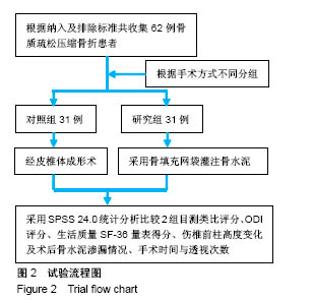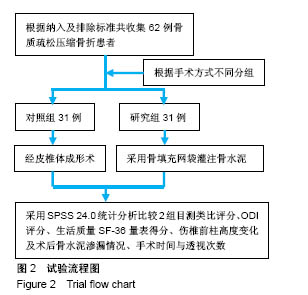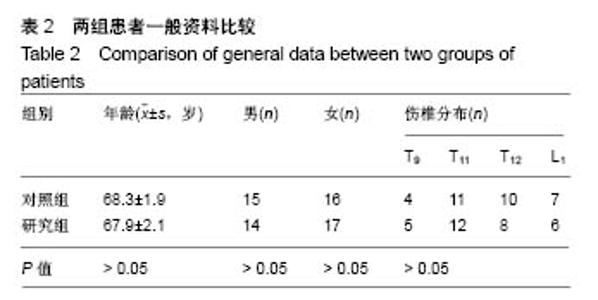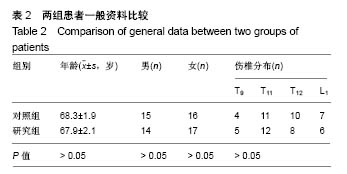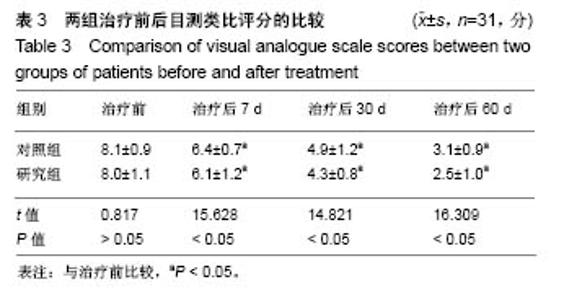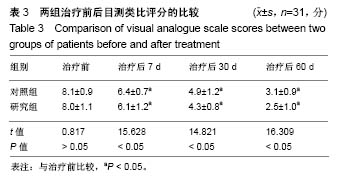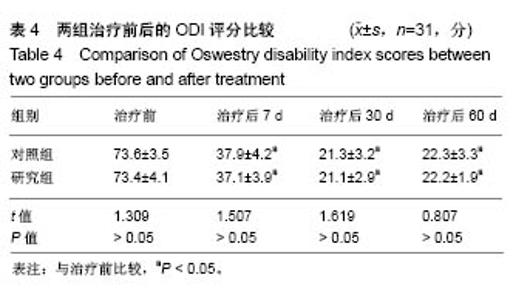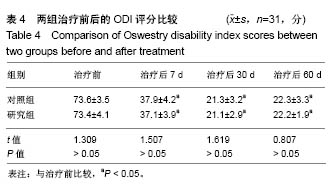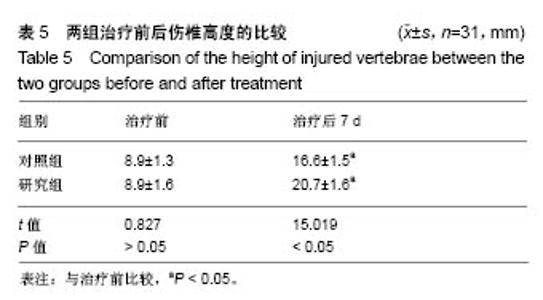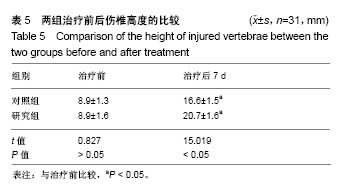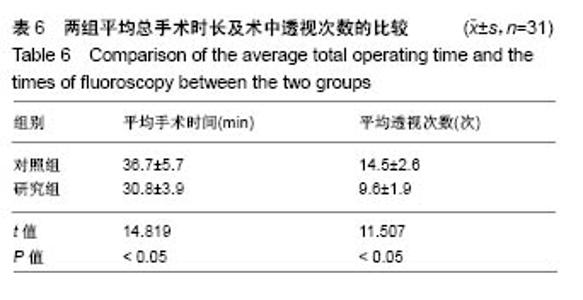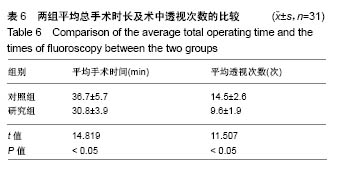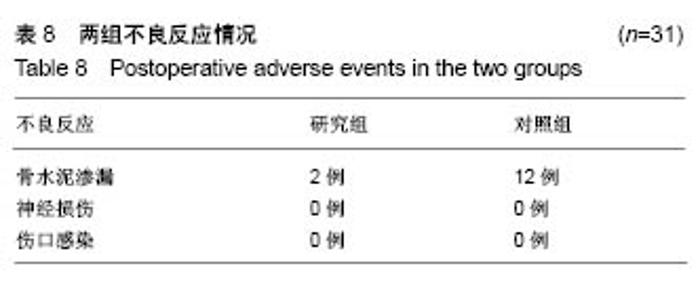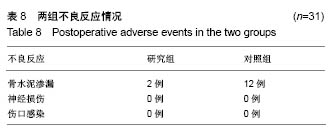Chinese Journal of Tissue Engineering Research ›› 2019, Vol. 23 ›› Issue (10): 1477-1482.doi: 10.3969/j.issn.2095-4344.1603
A bone filling mesh container for treating senile osteoporotic vertebral compression fractures combined with intravertebral cleft sign
Xu Yong, Guan Zhong, Li Yongxia, Chen Feng
- Affiliated Hospital of Qinghai University, Xining 810000, Qinghai Province, China
-
Received:2018-11-30Online:2019-04-08Published:2019-04-08 -
Contact:Guan Zhong, Professor, Master’s supervisor, Affiliated Hospital of Qinghai University, Xining 810000, Qinghai Province, China -
About author:Xu Yong, Master, Associate chief physician, Affiliated Hospital of Qinghai University, Xining 810000, Qinghai Province, China -
Supported by:the Guided Project of Qinghai Provincial Health and Family Planning Commission, No. 2016-wjzdx-50 (to XY)
CLC Number:
Cite this article
Xu Yong, Guan Zhong, Li Yongxia, Chen Feng. A bone filling mesh container for treating senile osteoporotic vertebral compression fractures combined with intravertebral cleft sign[J]. Chinese Journal of Tissue Engineering Research, 2019, 23(10): 1477-1482.
share this article
| [1] 秦大平,张晓刚,宋敏,等.老年骨质疏松性胸腰椎压缩骨折治疗研究进展[J].中华中医药杂志,2017,32(2):679-684.[2] Jun DS,An BK,Yu CH,et al.Practical use of bone scan in patients with an osteoporotic vertebral compression fracture.J Korean Med Sci.2015;30(2):194-198.[3] Darko P,Igor B.Diagnostics and treatment of osteoporotic vertebral fractures. Reumatizam.2014;61(2):75.[4] Waterloo S,Ahmed LA,Center JR,et al.Prevalence of vertebral fractures in women and men in the population-based Tromsø Study.BMC Musculoskelet Disord.2012;13(1):3.[5] Kim DY,Lee YK,Ha YC,et al.Mortality after vertebral fracture in Korea: Analysis of the national claim registry. Bone. 2011;48(7): 1859-1865.[6] 马洪,李文蛟,冯伟临,等.西双版纳老年人骨质疏松性骨折流行病学初步调查[J].中国骨与关节杂志, 2009,8(5):263-265.[7] 赵刚,胡侦明,劳汉昌,等.昆明地区部分老年人群骨质疏松性骨折发病率初步调查和分析[J].中国骨质疏松杂志, 2007,13(4):257-259.[8] Jaremko JL,Siminoski K,Firth GB,et al.Common normal variants of pediatric vertebral development that mimic fractures: a pictorial review from a national longitudinal bone health study. Pediatr Radiol.2015;45(4):593-605.[9] Siminoski K,Lee KC,Jen H,et al.Anatomical distribution of vertebral fractures: comparison of pediatric and adult spines.Osteoporos Int.2012;23(7):1999-2008.[10] Chen AT,Cohen DB,Skolasky RL.Impact of nonoperative treatment, vertebroplasty, and kyphoplasty on survival and morbidity after vertebral compression fracture in the medicare population.Spine J. 2012;12(9):1729-1736.[11] Svedbom A,Alvares L,Cooper C,et al.Balloon kyphoplasty compared to vertebroplasty and nonsurgical;management in patients hospitalised with acute osteoporotic vertebral; compression fracture: a UK cost-effectiveness analysis. Osteoporos Int. 2013; 24(1):355-367.[12] 高志祥,李淳,李磊,等.PVP、PKP、骨填充网袋治疗胸腰段骨质疏松性椎体压缩性骨折的疗效分析[J].实用骨科杂志,2017,23(8): 680-683.[13] Yu W,Jiang X,Liang,et al.Intravertebral Vacuum Cleft and Its Varied Locations within Osteoporotic Vertebral Compression Fractures: Effect on Therapeutic Efficacy. Pain Physician. 2017; 20(6):E979.[14] 中华医学会骨质疏松和骨矿盐疾病分会.原发性骨质疏松症诊疗指南(2017)[J].中华骨质疏松和骨矿盐疾病杂志, 2017,10(5): 413-443.[15] 龚遂良,陈宝,范顺武,等.椎体内裂隙样变对经皮椎体后凸成形术疗效的影响[J].中华骨科杂志, 2014,34(1):6-12.[16] Wu AM,Lin ZK,Ni WF,et al.The existence of intravertebral cleft impact on outcomes of nonacute osteoporotic vertebral compression fractures patients treated by percutaneous kyphoplasty: a comparative study.J Spinal Disord Tech. 2014;27(3): E88.[17] 刘冬斌,李辉,程志安,等.经皮椎体成形术联合鲑鱼降钙素治疗骨质疏松椎体压缩性骨折的临床观察[J].中国骨质疏松杂志, 2012, 18(1): 36-39.[18] Fan J, Shen Y, Zhang N,et al. Evaluation of surgical outcome of Jack vertebral dilator kyphoplasty for osteoporotic vertebral compression fracture-clinical experience of 218 cases.J Orthop Surg Res.2016;11(1):56.[19] 李楠,何达,张贵林,等.PVP与PKP治疗伴椎体内裂隙样变的骨质疏松性椎体压缩骨折疗效对比观察[J].山东医药, 2015,55(4):1-4.[20] 吴爱悯,倪文飞,池永龙.椎体内裂隙征的形成机理、影像学特征及手术治疗[J].脊柱外科杂志,2012,10(1):56-59.[21] Kim YC,Kim YH,Ha KY.Pathomechanism of intravertebral clefts in osteoporotic compression fractures of the spine. Spine J. 2014;14(4): 659-666.[22] Sarli M,Pérez Manghi FC,Gallo R,et al.The vacuum cleft sign: an uncommon radiological sign. Osteoporos Int. 2005;16(10): 1210-1214.[23] 余伟波,梁德,江晓兵,等.经皮治疗有无裂隙骨质疏松椎体压缩骨折骨水泥分布及渗漏率比较[J].广东医学, 2016,37(24):3678-3682.[24] Bang JI,Jin JI,Ghanem N,et al.Quality improvement of transgenic cloned bovine embryos using an aggregation method:Effects on cell number,cell ratio,embryo perimeter, mitochondrial distribution,and gene expression profile. Theriogenology.2015;84(4):509-523.[25] Zou D,Zhang K,Ren Y. Therapeutic effects of PKP on chronic painful osteoporotic vertebral compression fractures with or without intravertebral cleft.Int J Clin Exp Med.2015;8(9):15780-15786.[26] 余伟波,梁德,江晓兵,等.经皮椎体成形术和经皮椎体后凸成形术治疗伴椎体内真空裂隙的骨质疏松椎体压缩骨折比较研究[J].中国修复重建外科杂志,2016,30(9):1104-1110.[27] 高林,闫亮,郝定均,等.椎体内裂隙对经皮椎体后凸成形术疗效的影响[J].实用骨科杂志,2016,22(6):481-485.[28] Wiggins MC,Sehizadeh M,Pilgram TK,et al.Importance of intravertebral fracture clefts in vertebroplasty outcome. AJR Am J Roentgenol.2007;188(3):634-640.[29] Ha KY,Lee JS,Kim KW,et al.Percutaneous vertebroplasty for vertebral compression fractures with and without intravertebral clefts. J Bone Joint Surg Br.2006;88(5):629.[30] 李石岩,钮俊杰,宋达玮,等.椎体后凸成形术治疗骨质疏松性椎体骨折伴或不伴裂隙征的对比研究[J].浙江临床医学, 2014,16(6):843-845.[31] Wang G, Yang H, Chen K.Osteoporotic vertebral compression fractures with an intravertebral cleft treated by percutaneous balloon kyphoplasty.Bone.2010;92(11):1553.[32] Fu Z, Hu X, Wu Y, et al.Is There a Dose-Response Relationship of Cement Volume With Cement Leakage and Pain Relief After Vertebroplasty.Dose Response. 2016;14(4):1559325816682867.[33] 宋仁谦,周英杰,赵刚,等.高黏度骨水泥经皮椎体成形术与经皮椎体后凸成形术治疗骨质疏松压缩骨折的临床疗效观察[J].中国矫形外科杂志,2016,24(8):692-696.[34] Kolmeder S,Lion A,Landgraf R,et al.Thermophysical properties and material modelling of acrylic bone cements used in vertebroplasty.J Therm Anal Calorim. 2011;105(2):705-718. |
| [1] | Zhang Tongtong, Wang Zhonghua, Wen Jie, Song Yuxin, Liu Lin. Application of three-dimensional printing model in surgical resection and reconstruction of cervical tumor [J]. Chinese Journal of Tissue Engineering Research, 2021, 25(9): 1335-1339. |
| [2] | Zeng Yanhua, Hao Yanlei. In vitro culture and purification of Schwann cells: a systematic review [J]. Chinese Journal of Tissue Engineering Research, 2021, 25(7): 1135-1141. |
| [3] | Xu Dongzi, Zhang Ting, Ouyang Zhaolian. The global competitive situation of cardiac tissue engineering based on patent analysis [J]. Chinese Journal of Tissue Engineering Research, 2021, 25(5): 807-812. |
| [4] | Wu Zijian, Hu Zhaoduan, Xie Youqiong, Wang Feng, Li Jia, Li Bocun, Cai Guowei, Peng Rui. Three-dimensional printing technology and bone tissue engineering research: literature metrology and visual analysis of research hotspots [J]. Chinese Journal of Tissue Engineering Research, 2021, 25(4): 564-569. |
| [5] | Chang Wenliao, Zhao Jie, Sun Xiaoliang, Wang Kun, Wu Guofeng, Zhou Jian, Li Shuxiang, Sun Han. Material selection, theoretical design and biomimetic function of artificial periosteum [J]. Chinese Journal of Tissue Engineering Research, 2021, 25(4): 600-606. |
| [6] | Liu Fei, Cui Yutao, Liu He. Advantages and problems of local antibiotic delivery system in the treatment of osteomyelitis [J]. Chinese Journal of Tissue Engineering Research, 2021, 25(4): 614-620. |
| [7] | Li Xiaozhuang, Duan Hao, Wang Weizhou, Tang Zhihong, Wang Yanghao, He Fei. Application of bone tissue engineering materials in the treatment of bone defect diseases in vivo [J]. Chinese Journal of Tissue Engineering Research, 2021, 25(4): 626-631. |
| [8] | Zhang Zhenkun, Li Zhe, Li Ya, Wang Yingying, Wang Yaping, Zhou Xinkui, Ma Shanshan, Guan Fangxia. Application of alginate based hydrogels/dressings in wound healing: sustained, dynamic and sequential release [J]. Chinese Journal of Tissue Engineering Research, 2021, 25(4): 638-643. |
| [9] | Chen Jiana, Qiu Yanling, Nie Minhai, Liu Xuqian. Tissue engineering scaffolds in repairing oral and maxillofacial soft tissue defects [J]. Chinese Journal of Tissue Engineering Research, 2021, 25(4): 644-650. |
| [10] | Li Jun, Zuo Xinhui, Liu Xiaoyuan, Zhang Kai, Han Xiangzhen, He Huiyu, . Effect of over expression of miR-378a on osteogenic and vascular differentiation of bone marrow mesenchymal stem cell sheet [J]. Chinese Journal of Tissue Engineering Research, 2021, 25(31): 4939-4944. |
| [11] | Xing Hao, Zhang Yonghong, Wang Dong. Advantages and disadvantages of repairing large-segment bone defect [J]. Chinese Journal of Tissue Engineering Research, 2021, 25(3): 426-430. |
| [12] | Chen Siqi, Xian Debin, Xu Rongsheng, Qin Zhongjie, Zhang Lei, Xia Delin. Effects of bone marrow mesenchymal stem cells and human umbilical vein endothelial cells combined with hydroxyapatite-tricalcium phosphate scaffolds on early angiogenesis in skull defect repair in rats [J]. Chinese Journal of Tissue Engineering Research, 2021, 25(22): 3458-3465. |
| [13] | Wang Hao, Chen Mingxue, Li Junkang, Luo Xujiang, Peng Liqing, Li Huo, Huang Bo, Tian Guangzhao, Liu Shuyun, Sui Xiang, Huang Jingxiang, Guo Quanyi, Lu Xiaobo. Decellularized porcine skin matrix for tissue-engineered meniscus scaffold [J]. Chinese Journal of Tissue Engineering Research, 2021, 25(22): 3473-3478. |
| [14] | Mo Jianling, He Shaoru, Feng Bowen, Jian Minqiao, Zhang Xiaohui, Liu Caisheng, Liang Yijing, Liu Yumei, Chen Liang, Zhou Haiyu, Liu Yanhui. Forming prevascularized cell sheets and the expression of angiogenesis-related factors [J]. Chinese Journal of Tissue Engineering Research, 2021, 25(22): 3479-3486. |
| [15] | Liu Chang, Li Datong, Liu Yuan, Kong Lingbo, Guo Rui, Yang Lixue, Hao Dingjun, He Baorong. Poor efficacy after vertebral augmentation surgery of acute symptomatic thoracolumbar osteoporotic compression fracture: relationship with bone cement, bone mineral density, and adjacent fractures [J]. Chinese Journal of Tissue Engineering Research, 2021, 25(22): 3510-3516. |
| Viewed | ||||||
|
Full text |
|
|||||
|
Abstract |
|
|||||
